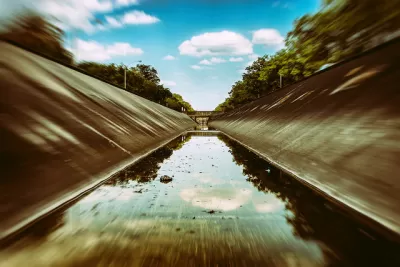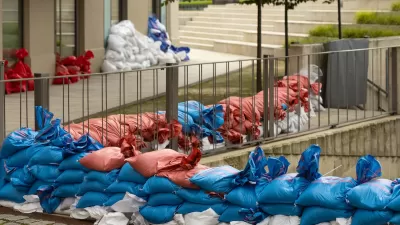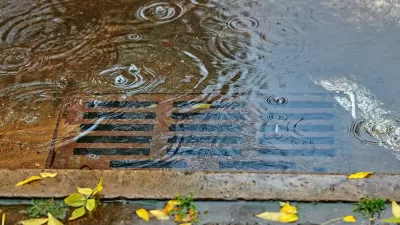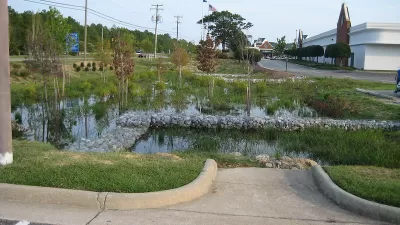A review of the current research into the effectiveness of green streets and green infrastructure finds gaps in our understanding of what works, and where.

"Surprisingly, there are very few peer-reviewed research papers that have evaluated Green Streets on a stormwater control and treatment basis," according to an article by Jonathan Page, who looks at some of the existing data and also makes recommendations for tailoring green streets to the specific needs of the natural and built characteristics of different cities.
According to Page, the “newness” of the green streets movement and the difficulty in monitoring and instrumenting green street projects contribute to a lack of data and research about the effectiveness of green streets.
Projects in Seattle and Portland have provided some non-peer reviewed dataset, "but the study and evaluation is typically not as rigorous as those found in a peer-reviewed journal."
Moreover, the "excellent" results in downstream water quality protection and combined sewer overflow (CSO) reductions from those examples can't be expected in all parts of the country (or world), according to Page. Portland, Seattle, and other communities in the Pacific Northwest are perfect locations for green streets because "[r]ainfall patterns and storms in that ecoregion are characterized by low rainfall intensities and long durations." In other ecoregions, like the Southeast, "storms tend to have a much higher rainfall intensity and shorter duration, which means a lot of above ground storage is needed to temporarily retain runoff for infiltration and treatment after the storm has passed."
FULL STORY: Do Green Streets Actually Work for Stormwater Management?

Trump Administration Could Effectively End Housing Voucher Program
Federal officials are eyeing major cuts to the Section 8 program that helps millions of low-income households pay rent.

Planetizen Federal Action Tracker
A weekly monitor of how Trump’s orders and actions are impacting planners and planning in America.

Ken Jennings Launches Transit Web Series
The Jeopardy champ wants you to ride public transit.

Washington Legislature Passes Rent Increase Cap
A bill that caps rent increases at 7 percent plus inflation is headed to the governor’s desk.

From Planning to Action: How LA County Is Rethinking Climate Resilience
Chief Sustainability Officer Rita Kampalath outlines the County’s shift from planning to implementation in its climate resilience efforts, emphasizing cross-departmental coordination, updated recovery strategies, and the need for flexible funding.

New Mexico Aging Department Commits to Helping Seniors Age ‘In Place’ and ‘Autonomously’ in New Draft Plan
As New Mexico’s population of seniors continues to grow, the state’s aging department is proposing expanded initiatives to help seniors maintain their autonomy while also supporting family caregivers.
Urban Design for Planners 1: Software Tools
This six-course series explores essential urban design concepts using open source software and equips planners with the tools they need to participate fully in the urban design process.
Planning for Universal Design
Learn the tools for implementing Universal Design in planning regulations.
Heyer Gruel & Associates PA
Ada County Highway District
Institute for Housing and Urban Development Studies (IHS)
City of Grandview
Harvard GSD Executive Education
Toledo-Lucas County Plan Commissions
Salt Lake City
NYU Wagner Graduate School of Public Service





























